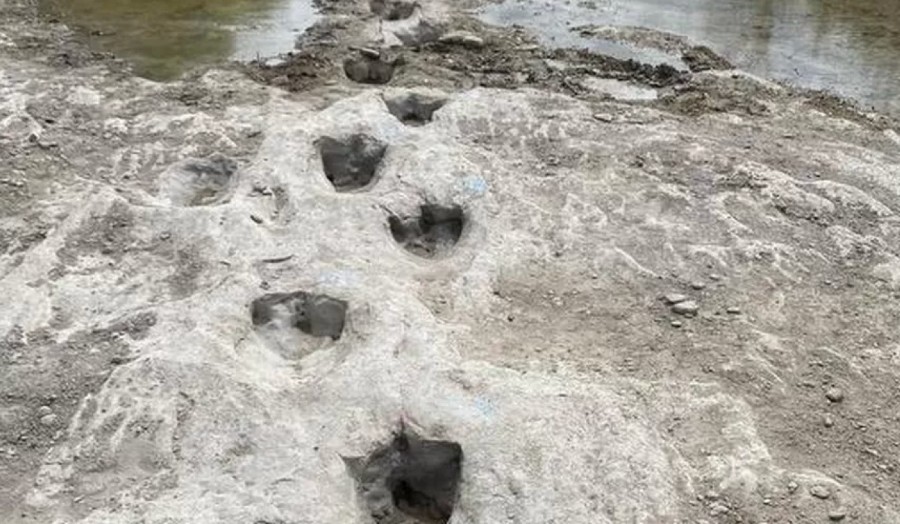In the midst of a drought in north-west Texas, multiple Acrocanthosaurus dinosaur tracks have been discovered at the aptly named Dinosaur Valley state park.
Widespread drought has caused the Paluxy river that runs through central Texas to dry up almost entirely, which has revealed some of the best-preserved dinosaur tracks in the world.
The arid conditions have revealed about 60 prints, with an estimated 140 tracks from the dinosaur in total. Superintendent Jeff Davis told the BBC that the recently exposed tracks are called the “Lone Ranger trackway”, belonging to one Acrocanthosaurus, who walked that trail for about 100ft. There are an estimated 140 tracks in total from this one dinosaur, with about 60 visible now.

Acrocanthosaurus was a therapod, a typical three-toed dinosaur standing at about 15ft tall, and would have weighed about seven tonnes. The last time the tracks were seen, was back in 2000, with the prints partially hidden under layers of water and sediment, though visitors can still see other dinosaur tracks at the state park depending on the weather conditions.
“Most tracks that have recently been uncovered and discovered at different parts of the river in the park belong to Acrocanthosaurus,” said park spokesperson, Stephanie Salinas Garcia, in an email to CNN.
Prints from the 66ft creature known as the Sauroposeidon were also discovered. Experts believe that the Acrocanthosaurus preyed on Sauroposeidon, explaining why their prints were discovered together. The Sauroposeidon stood at 60ft tall, with a long neck, and weighed about 44 tonnes when fully grown.
Extreme weather it seems also has led to some other surprises, ancient tree stumps that are believed to be 10,000 to 15,000 years old have appeared in Friesland, while in Germany, falling levels in the river Rhine have revealed so-called ‘hunger stones’, reminders of earlier droughts that led to failed crops and famine.
In Spain, the ‘Spanish Stonehenge’ a 4000-year-old stone circle of Guadalperal has been revealed, while in Ourense the entierty of an extensive Roman camp is above water.
Never mind the fevered gold rush in California, or the Human remains have been discovered in Lake Mead – the most prominent US reservoir – as water levels decline.



